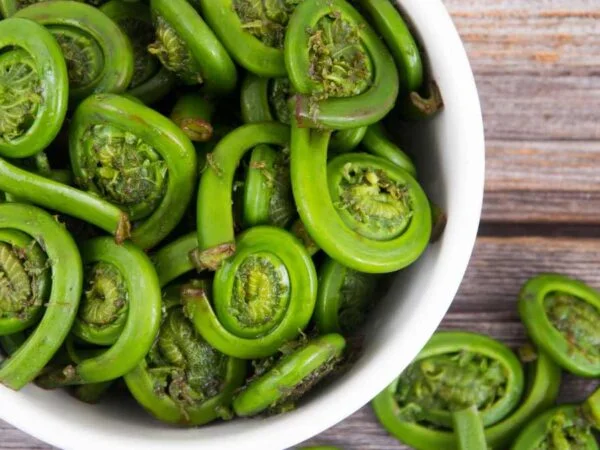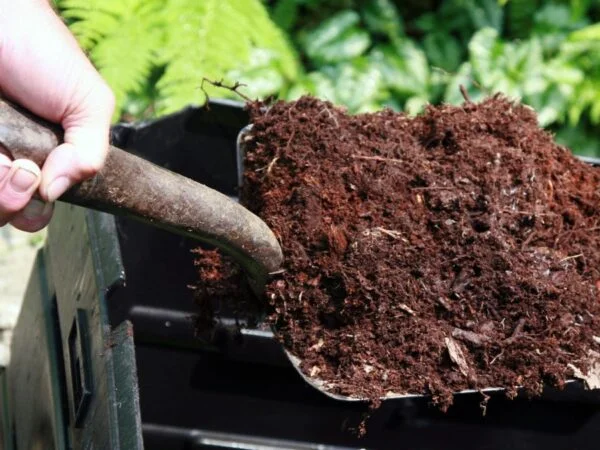Keeping a fern over the winter can be a daunting task, but fear not! With the right care and attention, including enough light and shade, you can ensure your fern thrives even during the colder months. By following some simple guidelines, you can protect your fern from the harsh winter conditions and help it flourish when spring arrives.
To keep a fern healthy over the winter, it's essential to mimic its natural habitat as closely as possible. This means providing the right amount of moisture, light, and temperature. During the winter months, ferns typically need less water, so be careful not to overwater them. Additionally, placing your fern in a location with indirect sunlight and maintaining a consistent temperature between 60-70°F (15-21°C) can help it survive the winter months. Consider using a humidifier or placing a tray of water near the fern to increase humidity levels, as indoor heating can dry out the air and harm your plant. With proper care, your fern can remain lush and green throughout the winter season.
Ready to dive deeper into fern care? Explore different fern species and their specific winter needs, learn about the best soil mixtures and fertilizers for optimal growth, and discover creative ways to display and care for your fern indoors. Whether you're a seasoned plant enthusiast or just starting your green thumb journey, there's always more to learn about keeping your ferns thriving year-round.
Key Takeaways
- Understand Fern Care: Familiarize yourself with the specific needs of ferns to provide proper care.
- Prepare Ferns for Winter: Before winter sets in, prepare your ferns by trimming, cleaning, and assessing their health.
- Implement Indoor Overwintering Strategies: Bring ferns indoors before the cold weather arrives to protect them from harsh conditions.
- Shield Ferns from Environmental Stress: Create a stable environment by controlling temperature, humidity, and drafts to prevent stress on ferns.
- Adjust Watering and Feeding in Winter: Modify your watering and feeding schedule to accommodate the reduced growth rate of ferns during winter.
- Ensure Adequate Lighting for Growth: Place ferns in locations with sufficient indirect light to support their growth even during the darker winter months.
Understanding Fern Care
Ideal Temperature
Maintain indoor temperatures between 60-75 degrees Fahrenheit to support optimal fern growth. Consider using greenhouses or sunrooms to regulate temperatures effectively. Place ferns in rooms with consistent heating systems for stable temperature conditions.
Moisture Needs
Research the specific moisture requirements of your fern species to ensure proper care during winter. Increase humidity levels around ferns using a humidifier or water tray. Avoid fertilizing ferns in winter as they usually go dormant during this period.
Humidity Requirements
Combat dry indoor environments by elevating humidity levels around your ferns. Understand the significance of adequate humidity for the health of your ferns, especially in winter. Utilize a humidifier or water tray to maintain suitable humidity levels consistently.
Light Conditions
Provide sufficient lighting for your ferns to thrive and survive effectively. Place them near windows to ensure they receive ample light exposure. Prevent damage by avoiding direct sunlight on your ferns.
Preparing Ferns for Winter
Anticipating Frost
Frost Alerts
- Be alert for frost alerts to safeguard ferns from cold temperatures.
- Bring Boston ferns indoors before the first frost to prevent damage.
- Shield ferns from drafts to avoid exposure to freezing temperatures.
Watering Adjustments
- Adjust watering frequency based on fern species and environmental conditions.
- Monitor soil moisture levels regularly to prevent overwatering or underwatering.
- Implement a proper watering schedule to maintain fern health during winter.
Pruning Techniques
Prune Before Winter
- Keep ferns healthy by pruning before winter to manage size and remove dead fronds.
- Maintain beauty by dividing every two years if they outgrow their container.
Dormancy Insights
Understanding Dormancy
- Know that ferns go dormant during winter months.
- Avoid fertilizing ferns during dormancy for natural growth cycle support.
Indoor Overwintering Strategies
Choosing Locations
Near Windows
- Place ferns near windows to ensure they receive sufficient natural light.
- Monitor ferns' proximity to windows to prevent exposure to drafts.
- Rotate ferns periodically to promote even growth from all sides.
Non-Working Fireplaces
- Utilize non-working fireplaces as decorative spaces for ferns during winter.
- Avoid placing ferns too close to non-working fireplaces to prevent heat damage.
- Create a cozy ambiance by incorporating ferns into non-working fireplace decor.
Using Plant Stands
- Elevate ferns using plant stands to enhance their visibility and aesthetic appeal.
- Choose plant stands that complement ferns' size and style for a cohesive look.
- Ensure plant stands provide proper stability and support for fern containers.
Hanging Methods
- Opt for hanging methods like macrame plant hangers for suspended fern displays.
- Consider ferns with trailing foliage for a stunning visual effect when hung.
- Ensure hanging methods are secure and can support the weight of fern containers.
Shielding from Environmental Stress
Draft Protection
Shield fern from drafts by avoiding exposure to cold air and temperature fluctuations. Position them away from doors, windows, or vents that may cause drafts. Use barriers like curtains or screens for indoor protection.
Temperature Fluctuations
Monitor indoor temperature changes to prevent stress on ferns. Avoid placing them near heaters or air conditioners causing fluctuations. Stable temperatures are vital for the health of ferns.
Watering and Feeding in Winter
Monthly Watering Tips
Develop a monthly watering schedule tailored to your fern's species and the surrounding environment. Adjust the watering frequency based on signs of dryness or excess moisture to prevent harm. Use room temperature water when watering to avoid shocking the delicate roots.
When caring for ferns in winter, it's crucial to adjust the watering routine according to their specific needs. Overwatering can lead to root rot, while underwatering can cause wilting and stunted growth. By monitoring the soil moisture levels regularly, you can ensure optimal hydration for your ferns.
Creating a watering calendar helps in maintaining a consistent schedule throughout the winter months. Different fern varieties may have varying water requirements, so it's essential to research each species' preferences beforehand. By staying attentive to your ferns' condition, you can provide just the right amount of water they need.
Fertilizing Considerations
Understanding that ferns typically do not require fertilization during winter is key to their care. The dormant period in winter means that most ferns do not actively grow, reducing their need for additional nutrients. It's best to refrain from fertilizing during this time to avoid stressing the plants unnecessarily.
During the growing season, consider using a slow-release fertilizer specially formulated for ferns. This type of fertilizer provides a steady supply of nutrients over an extended period, supporting healthy growth without overwhelming the plants. Following a consistent fertilizing schedule ensures that your ferns receive essential nutrients for robust development.
When applying fertilizer, always follow the manufacturer's instructions carefully to avoid overfeeding your ferns. Excessive fertilizer can lead to nutrient imbalances and potential damage to the plant's roots. By providing appropriate nourishment at the right times, you can promote lush foliage and vibrant growth in your fern collection.
Lighting and Growth
Adequate Lighting
Ferns need adequate lighting for growth and photosynthesis, but direct sunlight can harm them. Using artificial grow lights indoors can supplement natural light.
- Ensure ferns get enough light for photosynthesis.
- Avoid direct sunlight to prevent leaf damage.
- Consider artificial grow lights for indoor ferns.
Growth Monitoring
Regularly monitor fern growth to assess health and development. Look for signs of new growth or changes in appearance to adjust care routines.
- Check for new growth regularly.
- Track growth patterns for thriving ferns.
Special Considerations for Ferns
Separating and Dividing
Biennial Routine
- Incorporate a biennial routine of dividing ferns to maintain their health and beauty.
- Divide ferns every two years if they outgrow their container for optimal growth.
- Prune ferns regularly to manage their size and promote new growth.
Post-Division Care
- Provide post-division care by ensuring proper watering and lighting for divided ferns.
- Monitor divided ferns for signs of stress or shock after the division process.
- Adjust care routines for divided ferns to support their recovery and growth.
Understanding Species Variance
- Research and understand the specific care requirements of different fern species.
- Adapt care routines based on the unique characteristics and needs of each fern species.
- Consider factors like light, temperature, and humidity preferences for different fern varieties.
The biennial routine of dividing ferns is essential to ensure their continued health. By dividing your ferns every two years, you allow them to thrive without becoming root-bound. This practice also promotes new growth and prevents overcrowding in the container. Regular pruning is crucial to managing the size of your ferns and encouraging healthy development.
After dividing your ferns, it's vital to provide them with adequate post-division care. Proper watering and lighting are key factors in supporting the recovery and growth of divided plants. Keep a close eye on your divided ferns for any signs of stress or shock following the division process. Adjusting your care routines accordingly will help them bounce back effectively.
Understanding the unique characteristics of different fern species is paramount in ensuring their well-being. Researching the specific care requirements of each type of fern allows you to tailor your maintenance practices accordingly. Factors such as light exposure, temperature preferences, and humidity levels play a significant role in the overall health and vitality of various fern varieties.
Seasonal Adjustments and Care
Seasonal Pruning
Implement seasonal pruning to maintain fern health and shape year-round. Before winter, prune ferns by removing dead fronds to encourage new growth. Regularly check ferns for pruning needs, aligning with their growth patterns.
Adjusting Care Routine
When it comes to caring for ferns, adapt care routines according to seasonal changes and fern development. Monitor the fern's health and appearance closely to decide on necessary care adjustments. Take into account factors like temperature, light exposure, and moisture levels when tweaking care routines.
Advanced Tips for Fern Survival
Advanced Moisture Techniques
Implement advanced moisture techniques like misting or pebble trays for fern care. Research and apply specialized moisture methods based on fern species requirements. Monitor fern response to advanced moisture techniques to ensure optimal growth.
Temperature Optimization
Optimize indoor temperatures to support fern growth and health during winter. Maintain stable temperatures within the ideal range for fern survival. Adjust heating systems or placement of ferns to optimize temperature conditions.
Summary
To keep your fern thriving through the winter, understand its care needs, prepare it for the colder months, implement indoor strategies, shield it from stress, adjust watering and feeding, manage lighting, and consider any special requirements. Make seasonal adjustments, follow advanced tips, and ensure consistent care for optimal survival.
Ensure your fern's health by applying these strategies diligently. Share these tips with fellow plant enthusiasts to help them keep their ferns flourishing as well.
Frequently Asked Questions
How can I prepare my ferns for winter?
To prepare your ferns for winter, follow these steps:
- Trim any dead or damaged fronds.
- Move them to a location with indirect sunlight.
- Reduce watering frequency but ensure the soil remains moist.
- Avoid fertilizing during the dormant period.
Any special considerations for indoor overwintering of ferns?
When overwintering ferns indoors:
- Provide adequate humidity by placing a tray of water near the plants.
- Maintain consistent temperatures between 60-70°F (15-21°C).
- Ensure good air circulation to prevent fungal diseases.
What are some strategies to shield ferns from environmental stress in winter?
To protect ferns from environmental stress:
- Avoid placing them near drafts or heating vents.
- Use a humidifier to maintain appropriate moisture levels.
- Monitor for pests like spider mites and treat promptly.
How should I adjust watering and feeding of ferns during winter?
In winter, adjust watering and feeding by:
- Allowing the top inch of soil to dry out between waterings.
- Diluting fertilizer to half strength or skipping it altogether.
- Monitoring plant health closely for signs of overwatering or nutrient deficiencies.
What lighting conditions are best for fern growth during winter?
- Place ferns in bright, indirect light.
- Avoid direct sunlight, which can scorch the leaves.
- Consider supplemental grow lights if natural light is insufficient.
Image Source: Paid image from CANVA





